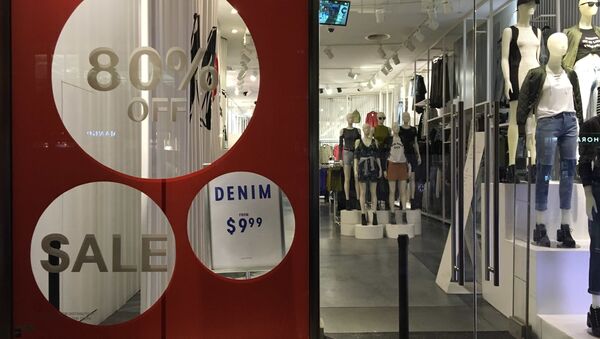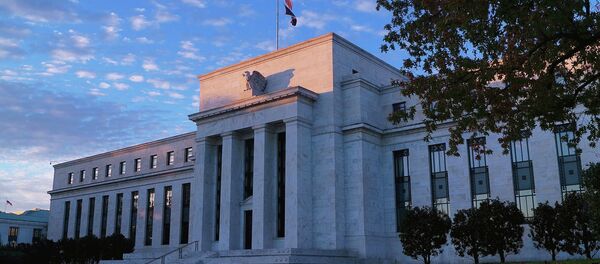Moreover, as it is still the middle of 3Q16, further developments in the real economy, employment, domestic consumption and the financial markets, as well as lending, might significantly affect the pace of growth, with downward pressures seen as a major concern, and economic expansion remaining subdued.
US consumer spending, which drives roughly 72 percent of the GDP, has been weakening throughout the current quarter, with retail sales, a key measure for domestic consumption, posting zero gain in the month of July, below previous expectations of 0.4 percent advance. The halt in retail followed a 0.8 percent expansion in June, as the Commerce Department reported on Friday. Moreover, excluding the automobile segment of the consumer market, sales plunged 0.3 percent in July.
"You have had two months of very strong job growth. It just seems very odd that spending would be weak,” Steve Blitz of New York-based M Science said.
An annualized reading, however, still demonstrated a 2.3 percent growth. Auto sales rose 1.1 percent month-on-month, as the relatively loose monetary conditions allowed for a considerable expansion of consumer credit, and the dollar’s strength kept prices on imported goods subdued.
Subsequently, weaker sales and low inflation suggest the economy has not yet achieved enough sustainability for the Fed to take decisive action on policy.
"Fed members are afraid to come out from under their rocks until growth is sustainably solid and inflation in, near or at their target, and today's reports don't provide them with any comfort that will happen soon," Joel Naroff of Holland, PA-based Naroff Economic Advisors said.
Reflecting the less optimistic view on the broader economy, the New York Fed downgraded its 3Q GDP growth forecast to 2.43 percent from the previously expected 2.63 percent. The data suggest more sluggishness in the economy, the regulator said.
"The largest negative contribution came from retail sales data," the NY Fed’s statement read.
The Atlanta Fed also revised its 3Q16 growth forecast downward, from the previously expected 3.7/3.8 percent to 3.5 percent, referring to the retail data and the marred outlook on inflation.
Despite the recent gains in US payrolls and hiring, the stickiness in wages might be the main factor preventing domestic consumption from more solid gains. The reasonably high level of household indebtedness might be another factor.
“It is a bit disappointing,” Kevin Cummins of Stamford, CT-based RBS Securities Inc. said. “Labor income is the key. Confidence seems to be moving sideways.”
To make the situation even more hopeless for those expecting a Fed hike, a separate report by the Labor Department showed that wholesale prices slumped in July – apparently, amid the lack of efficient consumer demand – their greatest slide in 12 months. Factory-gate prices dropped 0.4 percent in July compared to a 0.5 percent gain the previous month, with cheaper imports to blame.
With observers now expecting a hike in Fed fund rates in December, the widespread sentiment in the financial markets is that no hikes will happen well into next year.






